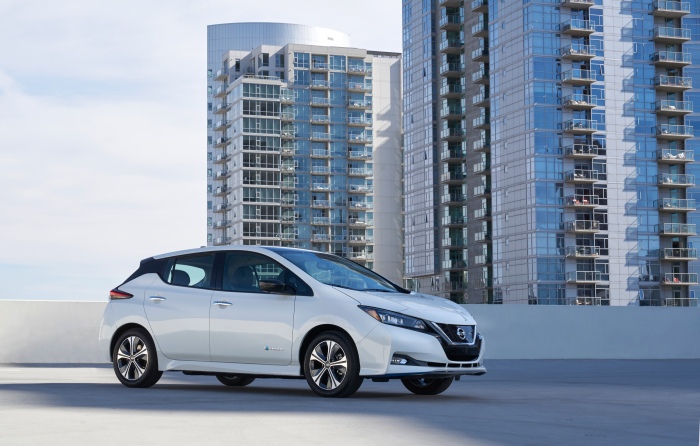
Over the past year or two there has been widespread speculation that when Nissan announced a new 60-something kWh battery upgrade it would rely on cells from LG. Not true.
Nissan executives told Electric Revs yesterday that the new LEAF PLUS packs and cells would be made by Nissan, not LG.
Because there have been some other conflicting or ambiguous reports, Electric Revs reached out to Nissan again today to re-confirm the source of the new battery cells.
“LG does not supply any cells for our batteries, both in the US and globally, for either the 40 or 62 kWh battery”, according to Nissan spokesperson Jeff Wandell.
“LG is not a supplier for Nissan LEAF batteries or cells. Nissan manufactures the batteries for the [US] Nissan LEAF at our battery plant in Smyrna, Tennessee”, he said.
The battery factory in Smyrna is operated by a Nissan subsidiary called the Automotive Energy Supply Corporation or AESC. Nissan has made efforts to sell AESC during the past two years but Wandell said AESC is still owned by Nissan currently as no sale as been completed.
Categories: Auto Correction, Battery
Thank you Jeff for clarifying this. It gets kind of nuts sometimes when manufacturers are not clear (either by design or due to simple omission of details). Thanks again for reporting what you understood originally, and working to resolve unclear items.
LikeLiked by 1 person
75% of AESC sold to Envision, Nissan retained 25%, according to this article:
https://insideevs.com/nissan-to-sell-battery-division-to-envision-group/
This probably explains why the Leaf Plus has lower range than Hyundai’s Kona.
The Envision CEO was in an Q&A session recently and he does not sound credible to me talking about $50/kWh batteries.
Lastly, I wonder if this means the Leaf Plus is still using LMO chemistry? (hence no liquid thermo BMS)
LikeLike
Do you have a video link to that Envision CEO session?
My understanding of the LEAF’s cathode chemistry is that the cells in earlier years were LMO or largely Manganese-based but with some Nickel mixed in — I don’t think they were ever purely LMO. Perhaps in the 40 kWh pack cells they added some cobalt as in NMC (Nickel, Manganese, Cobalt).
I don’t think LMO vs NMC makes a lot of difference as far as the need for active thermal cooling. The Chevy Volt has had roughly similar cathode chemistry as the LEAF over the years but was always liquid cooled although they drew more power from those cells relative to the pack size. Like the LEAF, the early Volt cells were said to be LMO but actually had some Nickel and perhaps some cobalt mixed in.
I suspect the real issue is cost (added cooling costs more) and with the larger pack size they may no longer have any room in the pack to squeeze in active thermal cooling. The new pack is essentially the same size as the old one by shape and volume.
LikeLike
My impression was that Nissan switched the chemistry from LMO to NMC when they introduced the 30kwh batteries, but I don’t have documentation for that.
Someone on pushevs posted a tweet from Nissan UK that the e+ pack is fan cooled, so now I’m still confused, since other Nissan sources have said passive cooled only.
LikeLike
Hi Jeff. Go to this link and you may be able to find the video on the website. It was recent Q4 2018.
https://gef.stanford.edu/people/lei-zhang
LikeLiked by 1 person
Thanks!
LikeLike